AZ-305: Microsoft Azure Solutions Architect Expert
Design a logging and monitoring solution
Design for Azure workbooks and Insights
This lesson explains how to design effective Azure Workbooks and use Azure Insights to monitor and visualize your resources. Azure Workbooks is a flexible service that lets you create rich, interactive visual reports incorporating text, parameters, links, queries, metrics, and more. These reports can be shared across teams to enhance collaboration and provide deeper insights into your resource performance.
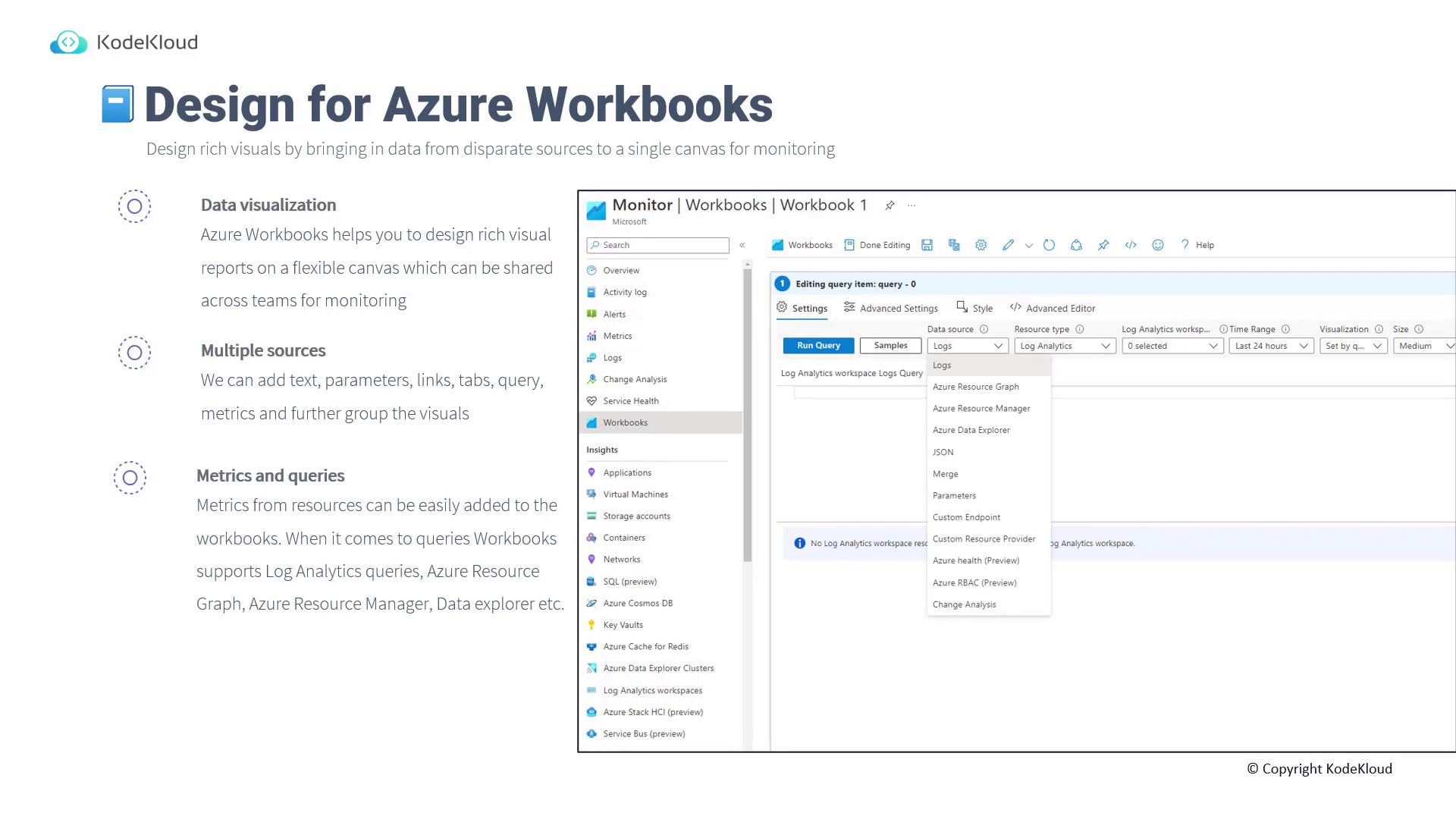
Workbooks allow you to combine both metrics and queries from diverse sources. You can easily integrate resource metric data and leverage various query languages and tools such as Log Analytics queries, Azure Resource Graph, Resource Manager, REST API queries, and Data Explorer. Sharing your workbook is simple—just click the share button at the top of the interface to distribute your report.
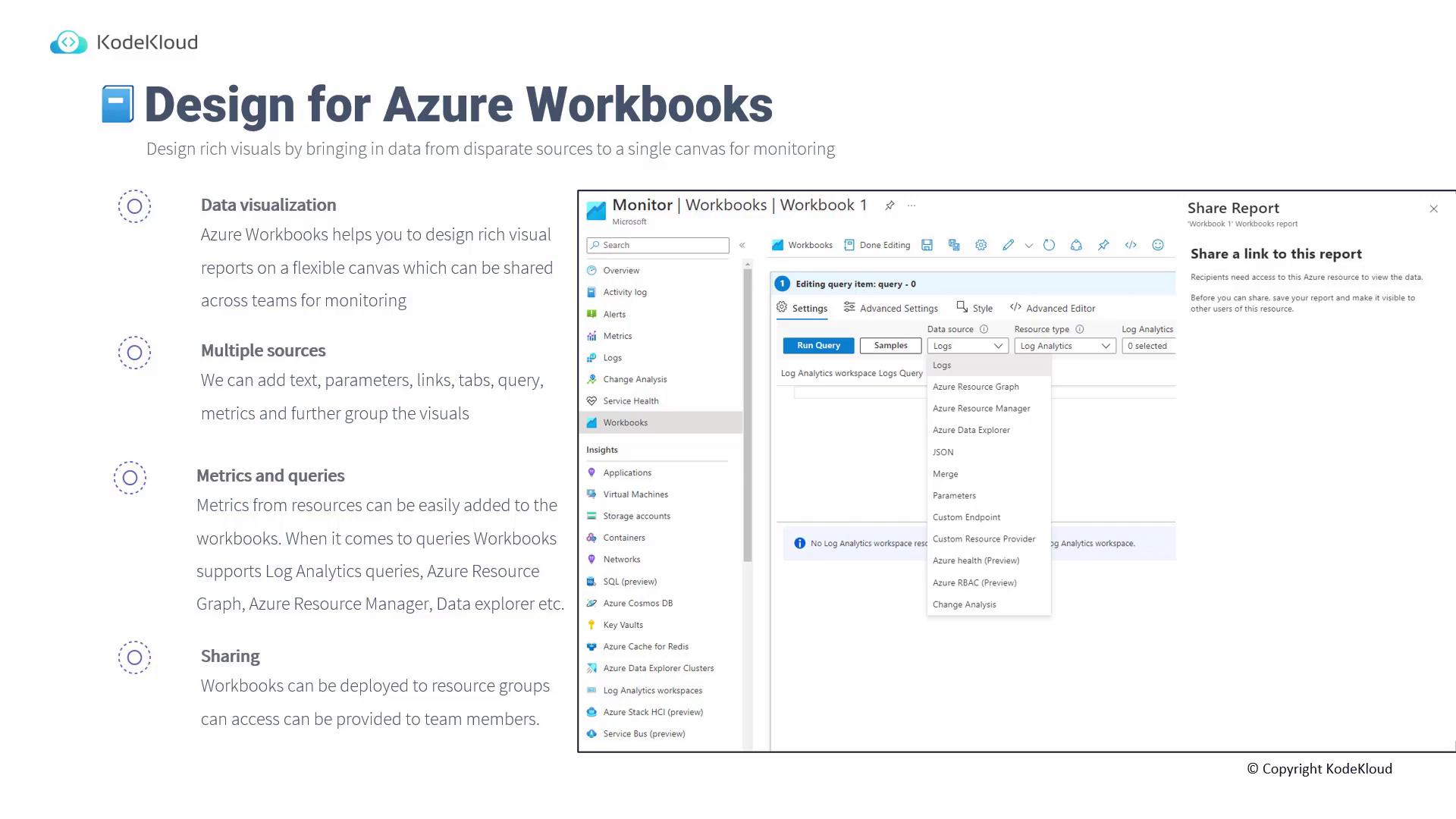
Creating a VM Performance Workbook in the Azure Portal
In this section, you will learn to build a simple workbook that monitors virtual machine (VM) performance. Follow these steps to create a dynamic dashboard showing performance metrics like CPU usage, network statistics, and disk performance.
Step 1: Adding a Markdown Heading
Begin by adding a Markdown text block to label your workbook. This heading identifies the purpose of your report:
# VM Performance
After clicking "Done Editing," the heading will be displayed on the canvas.
Step 2: Adding a Parameter for VM Selection
Next, add a parameter to create a drop-down menu for VM selection. This parameter can be set up using options such as drop-down, time range, resource picker, resource type picker, or location picker.
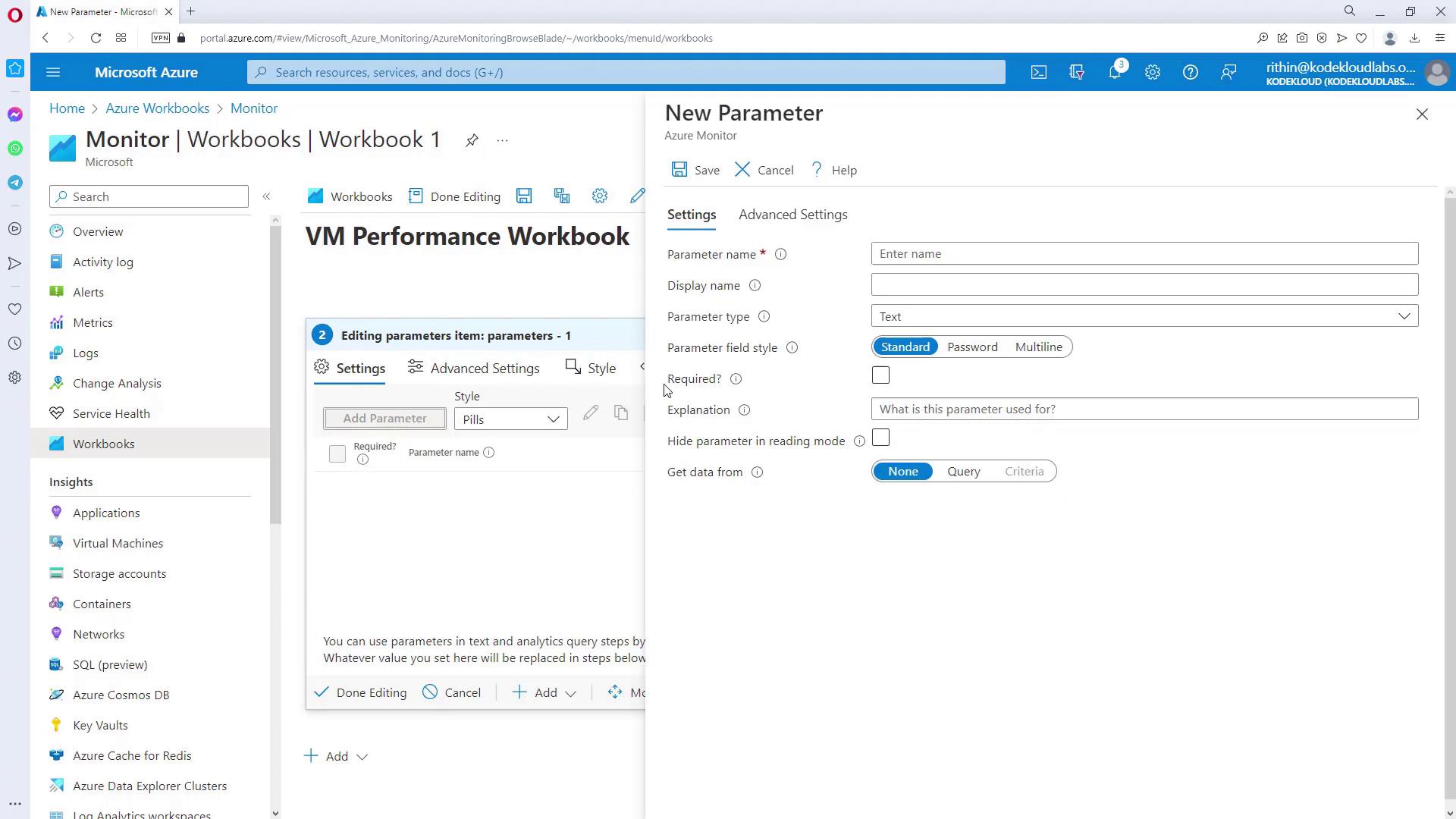
You can choose between a subscription picker or a resource picker. For our example, we’ll use the resource picker with a Resource Graph query to list all available Virtual Machines.
Step 3: Setting Up the Resource Graph Query
Utilize the Kusto Query Language (KQL) to list all Virtual Machines with a concise query. Instead of using multiple repetitive queries, implement the refined query below:
resources
| where type == 'microsoft.compute/virtualmachines'
Running this query with all subscriptions selected will populate the drop-down with all Virtual Machines. Click "Save" and then "Done Editing" to apply the configuration.
Step 4: Adding Performance Metrics
Now, add performance metrics to visualize the data for the selected VMs. Follow these steps:
- Click "Add Metric" and configure the resource type to Virtual Machine, linking it to the previously defined parameter for dynamic selection.
- Choose the metric you want to display (e.g., CPU percentage) and set the aggregation method (such as Average).
- Click "Run Metrics" to generate the visualization. You can adjust the visualization type (bar chart, area chart, etc.) and the graph size as needed.
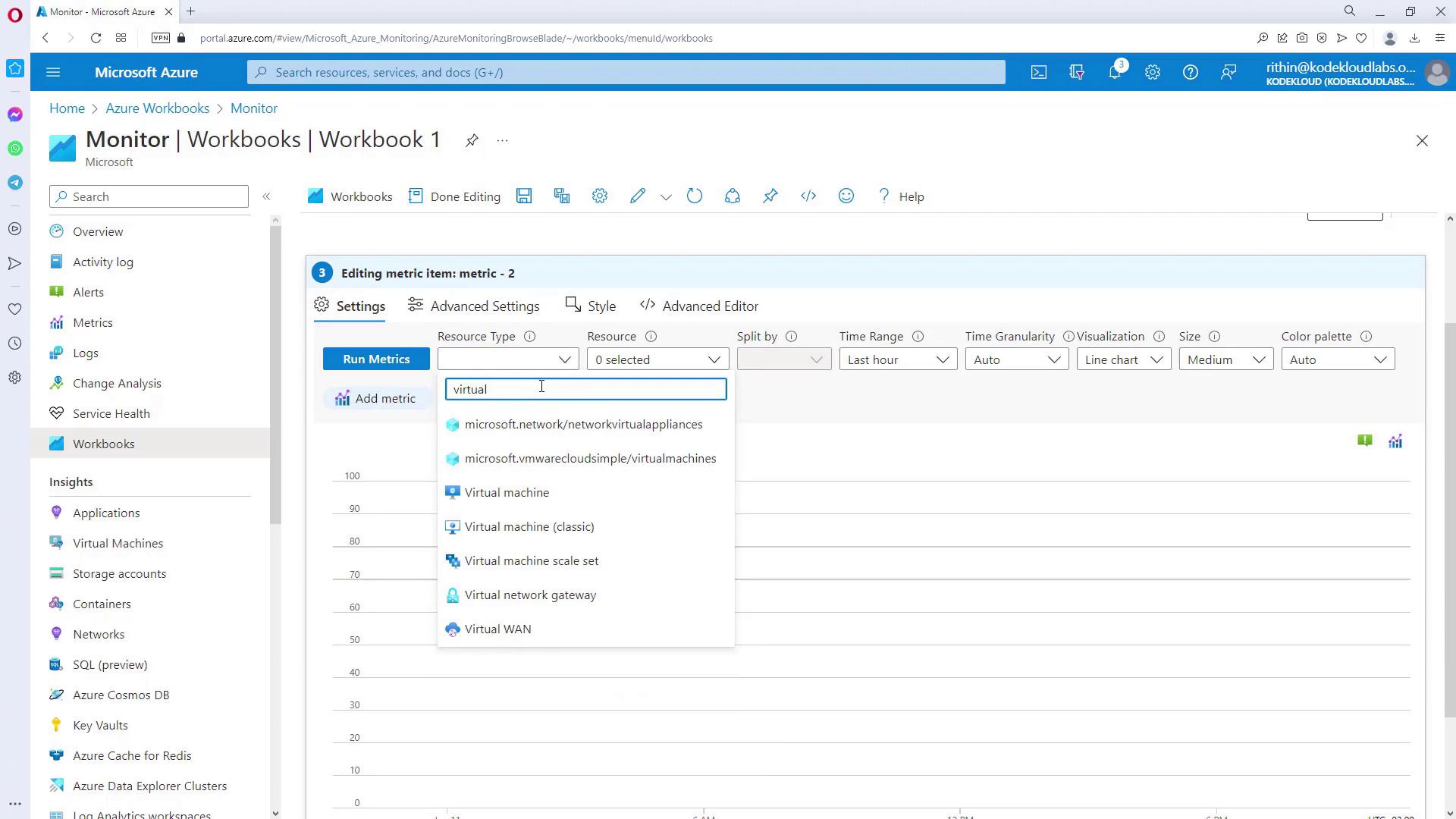
For additional insights, try adding another metric related to the disk performance. If a selected metric does not show data, switch to another metric with available values.
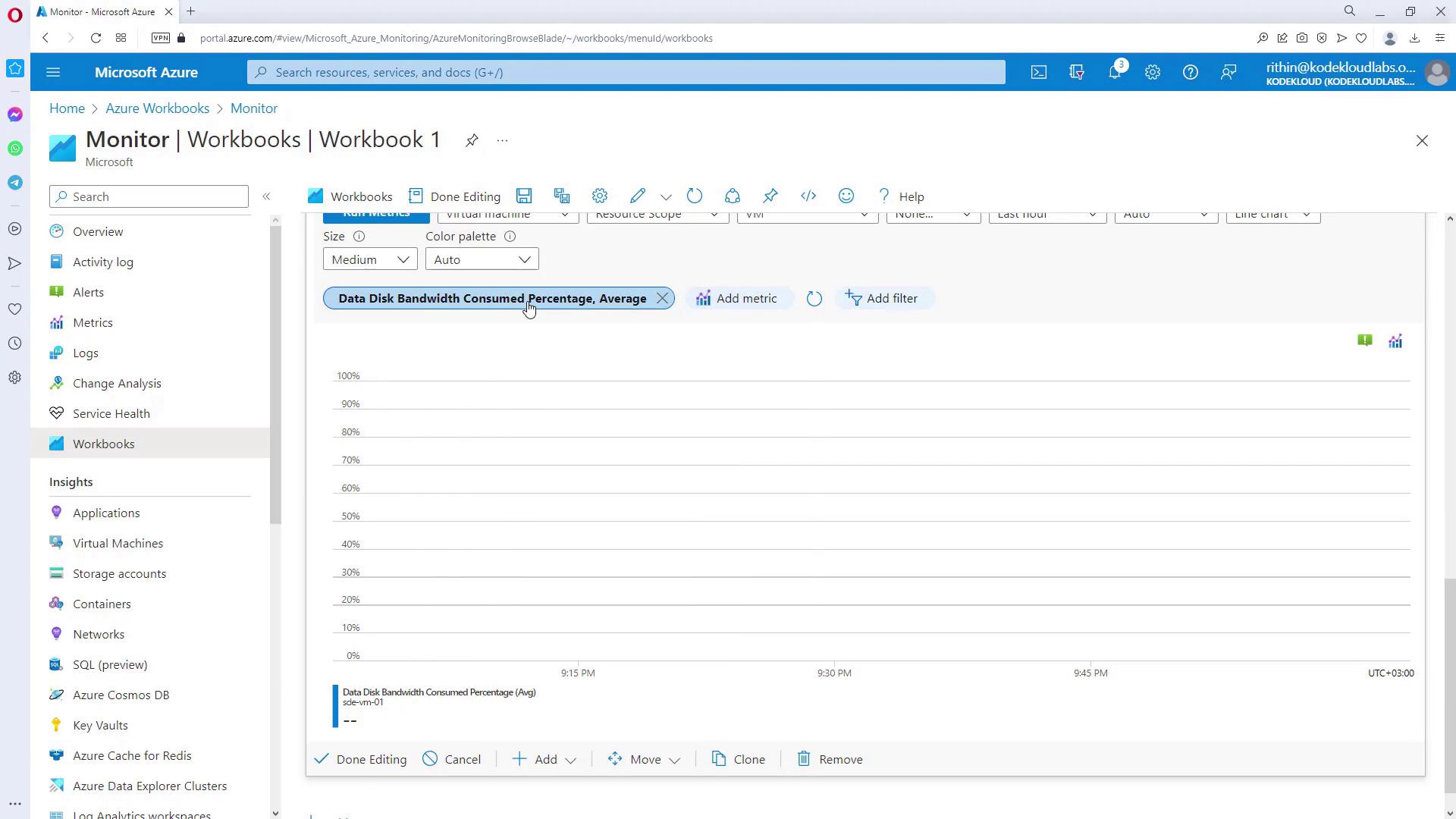
Once satisfied with your metrics, click "Done Editing" to finalize your workbook. You can also modify parameter settings to enable multi-selection if required.
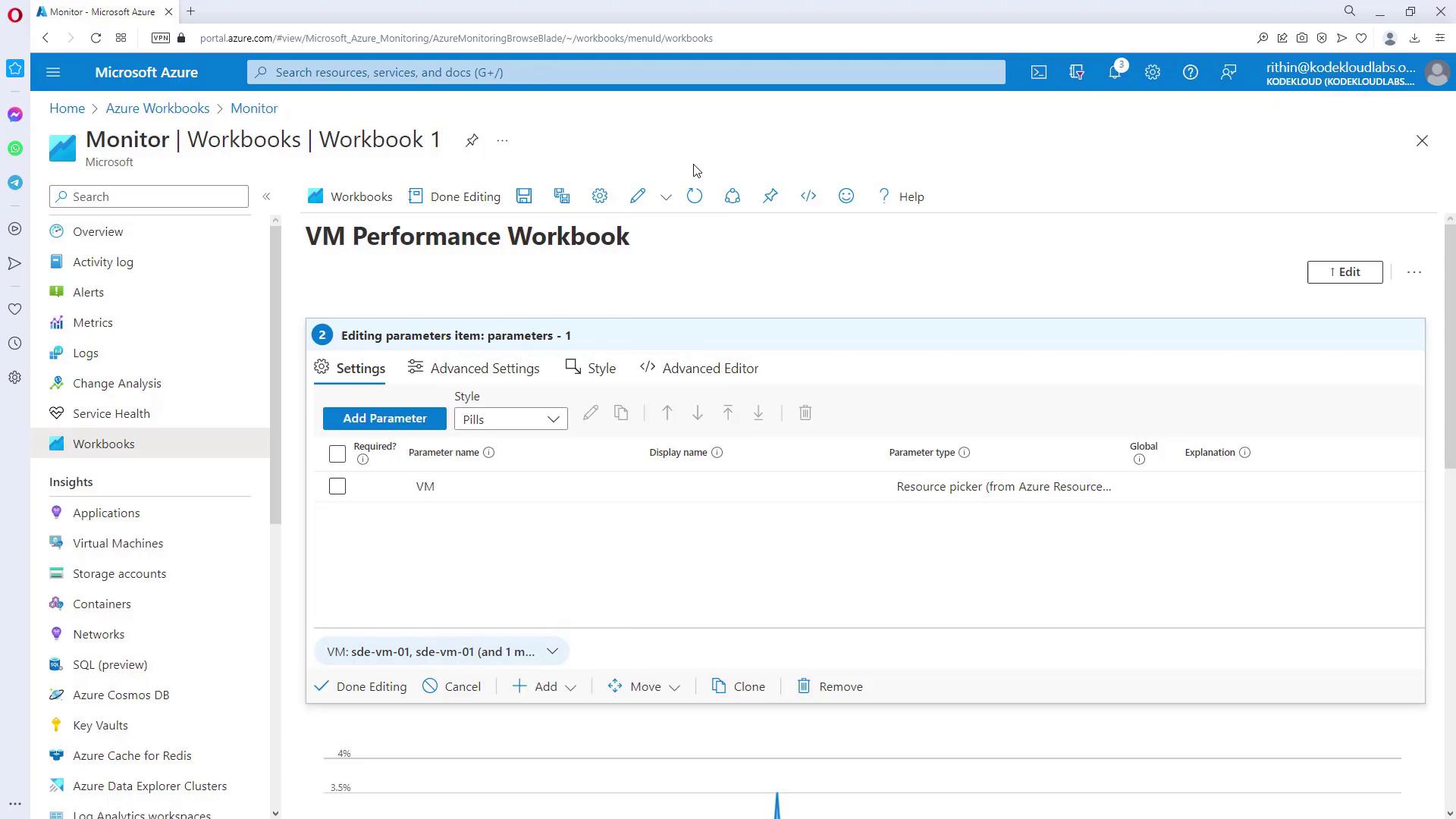
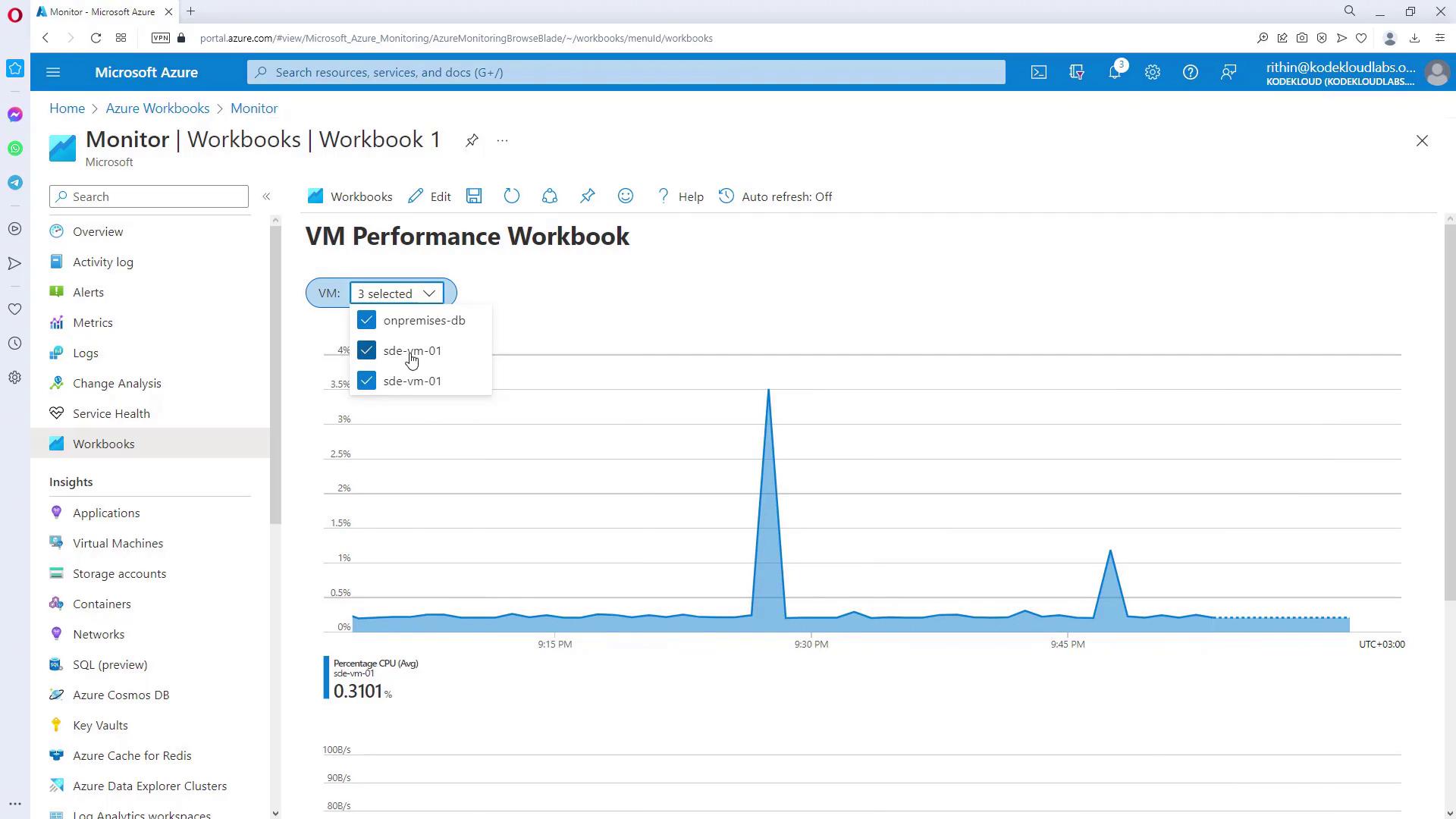
Tip
Remember to save and share your workbook when you’re done to enable team-wide collaboration.
Designing for Azure Insights
Azure Insights extends your monitoring capabilities by providing telemetry data for a broad range of services. In the Azure Monitor, Insights are available for services such as applications, virtual machines, storage accounts, containers, networks, and SQL databases. For exam purposes, focus on the following three core services:
- Application Insights
- VM Insights
- Container Insights
Application Insights
Application Insights is designed to help you monitor and troubleshoot your application's performance and health. It enables you to track:
- Query and request volumes along with their sources.
- Metrics like availability, performance, latency, and dependency health.
- User behavior and engagement patterns to identify areas for improvement.
- Overall application stack performance through in-depth telemetry data.
VM Insights
VM Insights offers a detailed overview of the health and performance of your virtual machines. With VM Insights, you can:
- Compare the performance of multiple VMs across different environments.
- Access information on VM properties, running processes, dependencies, and network topology.
Container Insights
Tailored for Kubernetes workloads, Container Insights monitors containerized environments by providing:
- Detailed performance and memory usage metrics for controllers, nodes, and pods.
- Centralized log collection to facilitate troubleshooting and analysis.
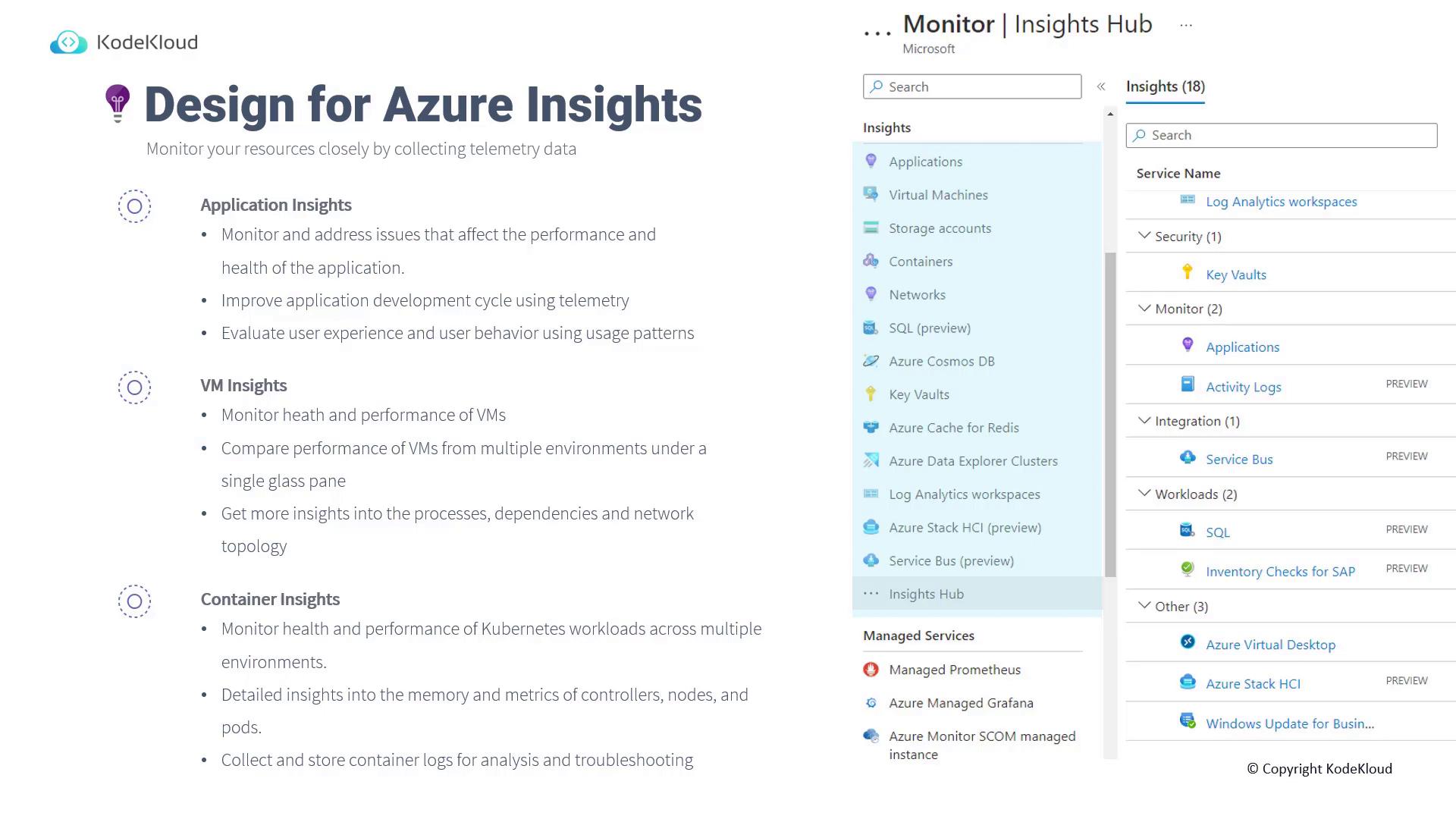
To access these insights, navigate to the Monitor section in the Azure portal. For Virtual Machines, ensure they are onboarded to send telemetry data to the configured workspace. For storage accounts, you can monitor metrics such as transactions, latency, errors, and capacity.
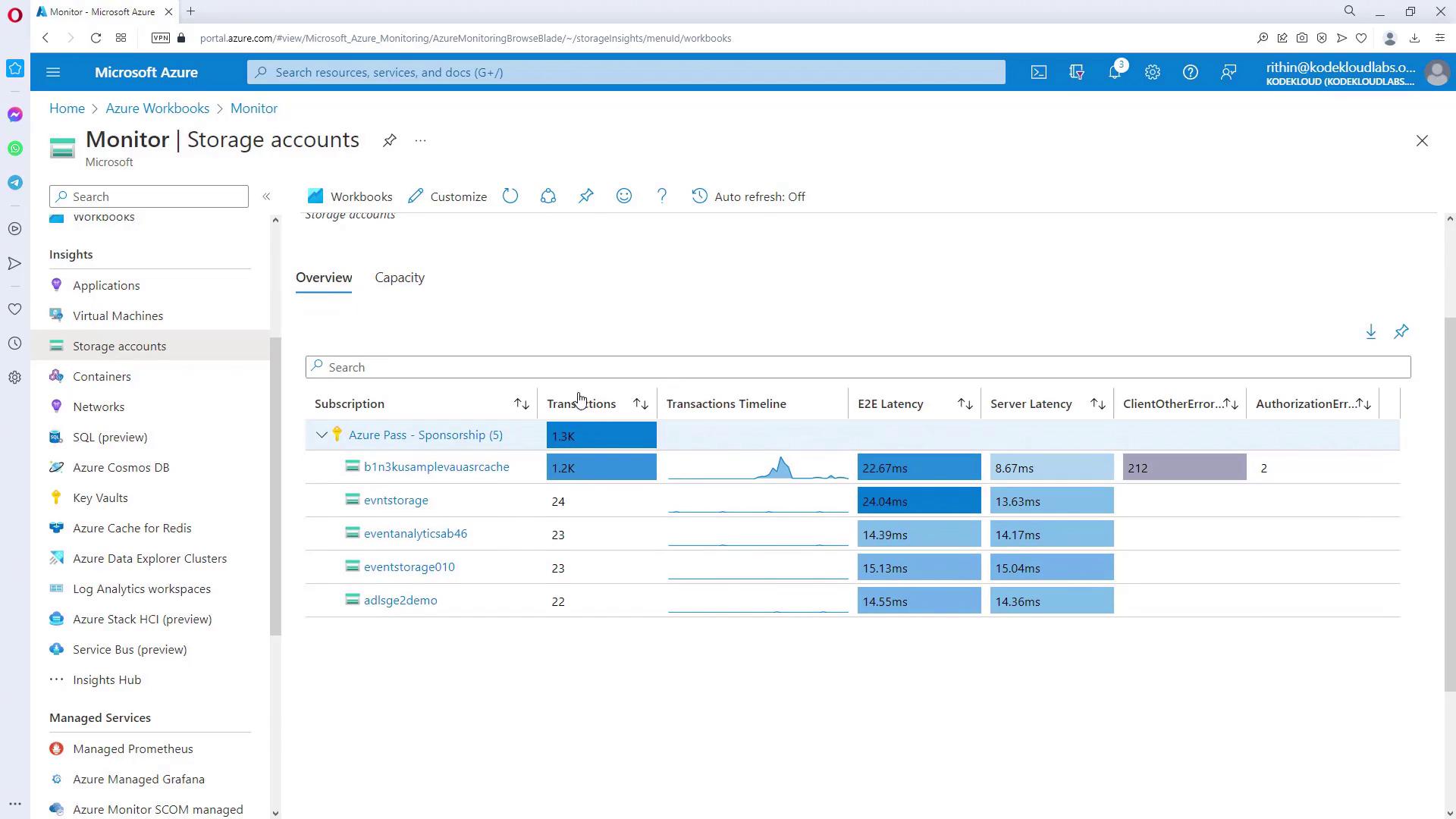
Azure Insights provides a rich, holistic view of your resource performance through detailed telemetry.
With these guidelines and steps, you now understand how to design robust Azure Workbooks and implement Azure Insights for monitoring resource performance and gathering actionable telemetry data. This approach not only enhances visibility into your environment but also empowers your team to make informed decisions based on real-time metrics and trends.
Next, we will move on to the final topic: Design for Azure Data Explorer.
Watch Video
Watch video content